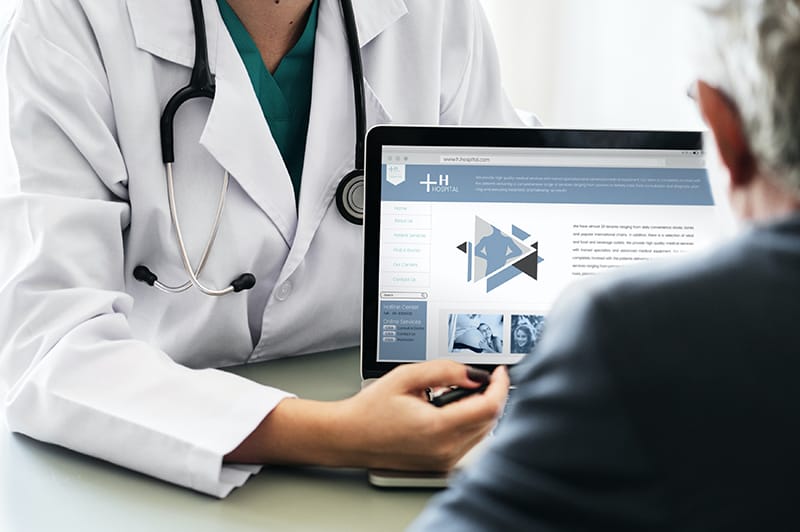Click here to get this post in PDF

Introduction
The telehealth market is growing primarily as a result of inclusive management. Virtual specialist visits are becoming more and more prevalent with email, video conferencing, telephone, and a variety of correspondence that offer a non-crisis choice. Medical services organizations are investing resources in various areas of data innovation, for example, electronic wellness entrances, shopping mall applications, testing test results, and innovative image delivery.
It is also important to understand the difference between the concepts of telehealth vs telemedicine. Telehealth refers to the use of technology for remote processes in healthcare – education, monitoring, training, and patient consulting. Telemedicine can be considered a part of telehealth, this term relates to providing specific clinical services.
Significant advances are being made in the psychiatric and nervous systems sciences in many areas of the medical care industry. Telemedicine is positively impacting mental health care as it seeks to associate with patients, which is especially important given that therapy for psychiatric disorders has been under discussion for some time. In addition, psychiatric management can reduce the cost of remote patients visiting a trauma center or other medical clinic. Neuroscience-related, Stroke Master Trauma Center and Attendant Couples working with specialists can commit to the patient remotely. In addition, Telehealth Consulting provides patients with access to clinical applications in provincial networks that they can reject in one way or another.
Versatile Healthcare (MHealth)
An increasingly important part of telehealth is portable medical services (MHealth), which could help shape a potentially more productive medical services framework. This idea is especially applicable in light of the more prominent location for implementing the applicable cash model. Portable inventions can improve regulatory expertise and healthcare for both medical care providers and suppliers. It deals with charging, planning, claims preparation and other work matters. Promoting better medical care outcomes and other value-added measures through Accountability Care Organizations (ACOs) is another open door to the reception of MHealth, which aims far and wide. In the interim, patients are willing to enroll for medical data and need more control over alternatives to their medical services.
MHealth can also improve precautions. Patients, for example, can use versatile inventions to monitor all long-distance conditions, for example, diabetes and hypertension. Weight loss applications that record caloric intake and fitness applications that measure the calories used during exercise are two such models. Versatile applications fitting to check blood glucose levels in diabetics are also filling up like helpers.
Difficulties in allocating health include security concerns and administrative weaknesses. MHealth’s frameworks will generally be open and working on the ranking of PC organizations in general, leading to vulnerabilities related to role insurance and fragile social data. Similar barriers must be overcome when integrating portable innovation into existing IT frameworks.
In any case, the latest developments in MHealth are improving the positive conditions for patients’ commitment and compliance. Analysts’ new tools that consider easy collaboration with doctors can help healthy and prevent healthy people. Similarly, certified medical professionals who use versatile inventions to collect information from their patients and improve care document efforts are just as profitable.
Relevant M&A activity
So far, talking about a number of elements has become the driver of the telehealth integration and acquisition movement (M&A). Significant exchanges in the telehealth space in recent months include:
The acquisition of Telecock’s Health at You, a tech-powered well-being and management, focuses on telehealth affiliations at more than 4,000 boss gatherings across the United States, at 125 million.
GlobalMed’s worldwide telemedicine organization Trait MD Safety, which interface patients and physicians through application planning and various arrangements.
Protected by C30 Medical Corporation of In Touch Technologies, a physician supplied a telemedicine board and doctors who serve more than 30 clinics in the United States.
Salos TeleHealth’s integration with Video Medicine, which operates a versatile, free-market market specialist network, enables patients to have video conversations with specialists and their decision-makers.
CRF Health’s intra-health protection, a portable wellness IT organization that is far from cloud-based patient observation, telehealth, information trade and investigative arrangements. And
Securing Traffic Capsic Health, a HIPPA integrated versatile innovation phase that enhances the benefits of project individuals, allows them direct access to the benefits of their arrangements, ID cards, preferred suppliers and telemedicine.
How to measure productivity in a medical center?
Biostate AI closes $12M to bring the Netflix model to molecular diagnostics
Telehealth has become an important aspect of a patient’s focus and manageable medical care framework. There are a number of factors that can work in addition to welcoming telehealth management. Paying for telemedicine at similar costs requires private backup plans as face-to-face management goes a long way in advancing telemedicine. Different guiding principles and rules between states have tested the goods in specific instances. In addition, although there is some kind of equality laws in the lion’s share of states, Medicare includes a certain number of telemedicine administrations. As far as the introduction of telehealth is concerned, the basic premise is that comfort does not increase the quality of comfort.
When examined thoroughly, telehealth provides ample guarantees, and in this area, innovative organizations should receive solid enthusiasm from both key and budget recipients.
Image Source: Rawpixel.com
